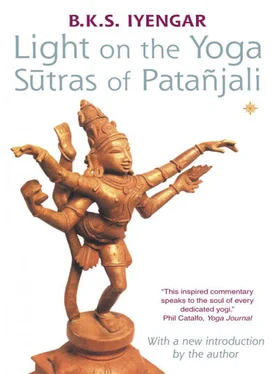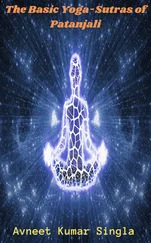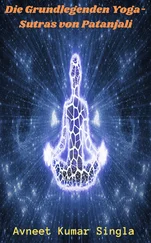Sadhana is a methodical, sequential means to accomplish the sadhana’ s aims in life. The sadhana’ s aims are right duty ( dharma ), a rightful purpose and means ( artha ), right inclinations ( kama ) and ultimate release or emancipation (moksa).
If dharma is the atonement of duty ( dharma sastra), artha is the means to purification of action ( karma sastra). Our inclinations ( kama ) are made good through study of sacred texts and growth towards wisdom ( svadhyaya and jñana sastra ), and emancipation (moksa) is reached through devotion ( bhakti sastra ) and meditation ( dhyana sastra).
It is dharma that uplifts man who has fallen physically, mentally, morally, intellectually and spiritually, or who is about to fall. Therefore, dharma is that which upholds, sustains and supports man.
These aims are all stages on the road to perfect knowledge ( vedanta). The term vedanta comes from Veda , meaning knowledge, and anta meaning the end of knowledge. The true end of knowledge is emancipation and liberation from all imperfections. Hence the journey, or vedanta , is an act of pursuit of the vision of wisdom to transform one’s conduct and actions in order to experience the ultimate reality of life.
Due to lack of knowledge or misunderstanding, fear, love of the self, attachment and aversion with respect to the material world, one’s actions and conduct become disturbed. This disturbance shows as lust ( kama ), wrath ( krodha ), greed ( lobha ), infatuation ( moha ), intoxication ( mada ) and malice ( matsarya). All of these emotional turbulences affect the psyche by veiling the intelligence.
The yoga sadhana of Patañjali comes to us as a penance in order to minimise or eradicate these disturbed and destructive emotive thoughts and the actions that accrue from them.
The yoga sadhana of Patañjali
The Sadhana is a rhythmic, three-tiered practice ( sadhana-traya ), covering the eight aspects or petals of yoga in a capsule as kriya yoga , the yoga of action, whereby all actions are surrendered to the Divinity (see Sutra II.1 in the sadhana pada). These three tiers ( sadhana-traya ) represent the body ( kaya ), the mind ( manasa ) and the speech ( vak).
Hence:
At the level of the body, tapas , or the drive towards purity, develops the student through practice on the path of right action ( karma marga).
At the level of the mind, through careful study of the self and the mind in it’s consciousness, the student develops self-knowledge, svadhyaya , leading to the path of wisdom ( jñanamarga).
Later, profound meditation using the voice to pronounce the universal aum (see Sutras I.27 and 28) directs the self to abandon ego ( ahamkara ), and to feel virtuousness ( silata ), and so it becomes the path of devotion ( bhakti marga).
Tapas is a burning desire for ascetic, devoted sadhana , through yama, niyama, Asana and pranayama. This cleanses the body and senses ( karmendriya and jñanendriya ), and frees one from afflictions (klesa nivrtti).
Svadhyaya means the study of the Vedas , spiritual scriptures that define the real and the unreal, or the study of one’s own self (from the body to the self). This study of spiritual science ( atma sastra ) ignites and inspires the student for self-progression. Thus svadhyaya is for restraining the fluctuations (mano vrtti nirodha) and in its wake comes tranquillity ( samadhana citta ) in the consciousness. Here the petals of yoga are pratyahara and dharana, besides the former aspects of tapas.
Isvara pranidhana is the surrender of oneself to God, and is the finest aspect of yoga sadhana. Patañjali explains God as a Supreme Soul, who is eternally free from afflictions, unaffected by actions and their reactions or by their residue. He advises one to think of God through repeating His name ( japa ), with profound thoughtfulness ( arthabhavana ), so that the seeker’s speech can become sanctified and thus the seed of imperfection (dosa bija) or defect be eradicated (dosa nivrtti) once and for all.
From here on, his sadhana continues uninterruptedly with devotion (anusthana). This practice, ( sadhana-ana ) will go on generating knowledge until he touches the towering wisdom (see Sutra II.28 in the sadhana pada).
Through the capsule of kriya yoga, Patañjali explains the cosmogony of nature and how to ultimately co-ordinate nature, in body, mind and speech. Through discipline tapas , study – svadhyaya , and devotion – Isvara pranidhana, the student can become free from nature’s erratic play, remaining in the abode of the Self.
In Sutra II.19 in the sadhana pada , Patañjali identifies the distinguishable, or physically manifest (visesa) marks and the non-distinguishable, or subtle, (avisesa) elements which comprise existence and which are transformed to take the individual to the noumenal (linga) state. Then through astanga yoga, coupled with sadhana-traya , all nature, or prakrti (alinga) becomes one, merged.
He defines the distinguishable marks of nature as the five elements: earth, water, fire, air and ether; ( pañca-bhuta); the five organs of action ( karmendriya); the five senses of perception ( jñanendriya ), and the mind ( manas). The non-distinguishable marks are defined as the tanmatra (sound, touch, shape, taste and smell) and pride ( ahamkara). These twenty-two principles have to merge in mahat (linga ), and then dissolve in nature (prakrti). The first sixteen distinguishable marks are brought under control by tapas – practice and discipline, the six undistinguishable ones by svadhyaya – study and abhyasa – repetition. Nature, prakrti, and mahat ,the Universal Consciousness, become one through and in Isvara pranidhana.
At this point all oscillations of the gunas that shape existence terminate and prakrtijaya, a mastery over nature, takes place. From this quiet silence of prakrti, Self ( purusa ) shines forth like the never fading sun.
In the Hathayoga Pradipika Svatmarama explains something very similar. He says that the body, being inert, tamasic , is uplifted to the level of the active, rajasic , mind through Asana and pranayama with yama and niyama. When the body is made as vibrant as the mind, through study, svadhyaya and through practice and repetitions, abhyasa , both mind and body are lifted towards the noumenal state of sattva guna. From sattva guna the sadhaka follows Isvara pranidhana to become a gunatitan (free from gunas).
Patañjali also addresses Svatmarama’s explanation of the different capabilities and therefore expectations for weak (mrdu), average ( madhyama ) and outstanding ( adhimatra ) students (see I.22). He guides the most basic beginner (the tamasic sadhaka ) to follow yama, niyama, Asana , and pranayama as tapas , to become madhyadhikarins (vibrant and rajasic ), and to intensify this practice into pratyahara (withdrawal of the senses) and dharana (intense focus and concentration) as their path of study, svadhyaya , and then to proceed towards sattva guna through dhyana (devotion), and to gunatitan (the state uninfluenced by the gunas) into samadhi , the most profound state of meditiation – through Isvara pranidhana.
Читать дальше












